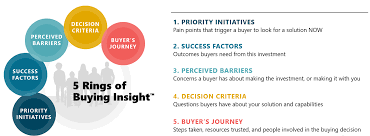BUSINESS
How to Build a High-Converting Buyer Persona Without Guesswork

We think we know our customers. We create these shiny one-pagers with names like “Startup Steve” or “Enterprise Emily” and slap a smiley stock photo next to a list of job titles and hobbies. We say we “understand our audience” because we filled in some blanks about income levels and whether they read TechCrunch or Wired.
But here’s the kicker – most of those personas don’t actually help us sell.
They just sit there. Look good in pitch decks. Collect digital dust.
And then we wonder why our campaigns don’t convert. Why is the click-through rate stuck. Why do leads go cold after the first contact. Why our agency is bleeding time trying to “personalize” everything without getting results.
It’s not a mystery. The reason is simple:
We’re building personas with guesses, not evidence.
Why Most Personas Fail Before They Start
At the root of the problem is this weird ritual we’ve adopted – creating personas based on opinion, not observation.
We hold team brainstorms. Someone says, “Our customer is probably 35, works in marketing, and likes kombucha.” Someone else nods, types it up, and boom – that’s our new persona.
But there’s a big difference between thinking you know your audience and knowing what they actually do.
I’ve made that mistake. Multiple times. I poured hours into building these neat little profiles, only to find out later that the highest converting audience wasn’t even close to what we imagined.
Here’s what happens when you build your personas on weak foundations:
- You spend weeks personalizing content for people who don’t buy
- Your ad targeting gets broader and less efficient
- You waste time crafting offers that don’t resonate
- Your team feels overwhelmed trying to optimize for audiences that don’t exist
And you start to feel like your agency is spinning its wheels – doing more, spending more, but getting less.
Building Personas Without Guesswork: What Changed for Me
The turning point came when I stopped trying to define “who” my buyers were in a traditional sense – and started looking at what jobs they were hiring me to do.
That change in perspective rewired everything.
Instead of obsessing over job titles or company sizes, I started tracking actual behaviors – the paths that led to purchases, the offers that got responses, the content that pushed people to convert.
That led me to a smarter, more modern approach: building data-driven personas with help from AI.
Now don’t get me wrong – I’m not just talking about uploading your email list to a CRM and calling it a day. I’m talking about creating behavioral profiles that reflect:
- How different segments actually interact with your brand
- What messaging makes them click, sign up, or schedule a call
- What their timelines, objections, and triggers look like
When I started doing this using tools like Elsa from M1-Project.com, the difference was night and day. I wasn’t guessing anymore – I was diagnosing. And the numbers proved it.
The Real Problem: Too Much Noise, Not Enough Signal
Marketing today is noisy. I don’t need to tell you that.
Clients expect ultra-personalized campaigns. Your competitors are flooding the market with ads. Your team is juggling five platforms, eight clients, and ten deliverables by Friday.
In the middle of that chaos, if you’re still working off personas built from gut feelings or “vibe checks,” you’re in trouble.
Because this is what you’re competing against now:
- Agencies using AI to monitor buying signals in real-time
- Competitors feeding data directly into dynamic personas
- Teams customizing offers before the prospect even lands on the site
And if your agency is still guessing? You’re not just behind – you’re invisible.
I felt that pressure. My team was pushing campaigns out the door, but our results started plateauing. Clients were asking for more tailored strategies, and I couldn’t deliver at scale without burning everyone out.
That’s when I realized: we didn’t need more content. We needed smarter targeting. And that meant building personas the right way.
Two Things You Need for High-Converting Personas
Once I stripped away the fluff, I realized that good personas rely on just two things:
1. Behavioral Data
If you don’t know how people behave before, during, and after they convert – you’re flying blind. This isn’t about surveys or vanity metrics. It’s about real behavior.
- What content do they consume?
- Where do they drop off in the funnel?
- What makes them come back and buy?
This data doesn’t lie. It shows you what actually matters – and what’s just noise.
2. A Tool That Turns That Data Into Personas
Let’s be real – nobody has time to manually dig through spreadsheets, analyze heatmaps, and run A/B tests for every client. That’s where tools like Elsa come in.
Elsa helps automate persona creation by using AI to sort through behavioral data, spot conversion patterns, and spit out clear, actionable insights. It lives inside your workflow – not outside it – and doesn’t require you to reinvent your process.
That’s why I added it to my stack. And I’ve kept it ever since.
Why This Matters More Than Ever
As an agency owner, you’re not just responsible for marketing – you’re responsible for growth. For ROI. For results.
You need tools and processes that don’t just sound smart – they need to work. Fast.
When I switched to using data-driven personas supported by Elsa, I didn’t just get better open rates or lower ad costs. I got clarity.
Clarity on who I was selling to.
Clarity on what they cared about.
Clarity on what to stop wasting time on.
And that clarity let me scale – without burning out my team or my budget.
Final Thought
Most buyer personas fail because they’re built on opinions instead of actions.
But you don’t need to play that game anymore.
If you’re serious about results – if you want to make marketing that moves people – you’ve got to stop guessing and start listening. Start tracking. Start acting on real signals.
That’s what data-driven personas let you do.
And if you want a shortcut? If you want to skip the spreadsheets and start seeing traction fast?
Check out what we’ve built at M1-Project.com. That’s where I found Elsa. That’s where I stopped guessing.
And that’s where everything changed.
BUSINESS
Why Quality Should Be Your Priority in CC Shops

In the digital era, CC shops—platforms that facilitate the buying and selling of credit card (CC) information—have grown into a significant aspect of online commerce. However, with this growth comes a crucial decision ultshop for users and vendors alike: whether to prioritize quantity or quality. While the temptation to focus on sheer volume is understandable, quality should always take precedence. Choosing quality CCs is not just about avoiding losses; it’s about building trust, ensuring security, and sustaining long-term success. This article explores why quality should be your top priority in CC shops and the benefits it offers.
Understanding the Concept of Quality in CC Shops
Quality in CC shops refers to the reliability, authenticity, and usability of credit card information. High-quality CCs are verified, have low fraud risk, and are supported by legitimate financial institutions. They allow for smoother transactions, reduce the likelihood of chargebacks, and minimize the risk of getting flagged for suspicious activity.
In contrast, low-quality or unverified CCs often come with risks such as expired data, unauthorized use, or errors in transaction processing. These CCs may seem appealing due to lower costs or availability, but they often lead to financial loss and reputational damage. In the world of CC shops, the principle of “you get what you pay for” is particularly true.
Security and Fraud Prevention
One of the most important reasons to prioritize quality in CC shops is security. Fraud is rampant in digital transactions, and low-quality credit cards increase the risk of unauthorized activity. High-quality CCs, however, come with verification protocols and monitoring systems that safeguard both buyers and vendors.
Using verified and reliable cards protects your operations from potential fraud, reduces the risk of chargebacks, and ensures that transactions are legitimate. By focusing on quality, you create a secure environment that safeguards your financial interests and the trust of those you do business with.
Building a Positive Reputation
Reputation is everything in the digital credit card marketplace. Vendors who prioritize quality over quantity are viewed as trustworthy, responsible, and professional. Customers are more likely to return to a seller known for providing high-quality CCs, while businesses that focus on low-quality or unverified cards risk being flagged as unreliable or fraudulent.
A strong reputation built on quality leads to long-term relationships with customers and other vendors. In competitive markets, this trust is invaluable—it encourages repeat business, positive reviews, and word-of-mouth referrals, all of which contribute to sustainable success.
Minimizing Financial Risks
Using low-quality CCs can lead to significant financial losses. Failed transactions, chargebacks, and blocked accounts ultshop.mobi are common consequences when dealing with unverified or fraudulent credit cards. Each failed transaction represents not only a lost opportunity but also potential fees and complications for the user or vendor.
High-quality CCs, on the other hand, are verified and less likely to trigger issues during processing. This reduces financial risks and ensures smoother operations, allowing users to focus on growth and efficiency rather than constantly managing problems caused by poor-quality cards.
Enhancing Transaction Efficiency
Quality credit cards facilitate faster, smoother, and more reliable transactions. Verified CCs are compatible with secure payment gateways and often come with features that prevent errors or interruptions during processing. This efficiency benefits both the buyer and the seller, ensuring that transactions are completed without delay or complication.
In CC shops where speed and reliability are valued, focusing on quality can enhance user experience and maintain operational consistency. Customers are more likely to engage with vendors who provide seamless transactions, reinforcing loyalty and trust.
Legal and Ethical Considerations
Prioritizing quality is not only a matter of security but also of legality and ethics. High-quality CCs come from legitimate sources and are typically verified for authorized use. Using or selling low-quality, unverified, or stolen credit card information can expose vendors and buyers to criminal liability and legal repercussions.
By focusing on quality, you operate within legal and ethical boundaries, which strengthens your credibility in the market. Vendors and users who respect legal frameworks are more likely to develop sustainable operations and avoid the significant risks associated with illicit activities.
Long-Term Sustainability
Focusing on quantity over quality may provide short-term gains, but it is rarely sustainable. Low-quality CCs increase the likelihood of disputes, blocked accounts, and financial loss, which can jeopardize your ability to continue operations.
Quality, however, ensures long-term stability. Verified and reliable CCs reduce operational risks, minimize disputes, and maintain the trust of customers and partners. For anyone seeking sustainable success in CC shops, quality is the foundation on which long-term growth is built.
Differentiation in a Crowded Market
The CC shop ecosystem is competitive, with numerous vendors offering similar products. In such a market, quality becomes a key differentiator. Vendors who focus on providing verified, high-quality CCs stand out as reliable and professional, while those who prioritize quantity risk being overlooked or labeled untrustworthy.
Platforms that emphasize quality, such as UltShop, illustrate how prioritizing verified and reliable credit cards can create a competitive edge. Customers and partners gravitate toward platforms known for high standards, ensuring repeat business and positive market recognition.
Encouraging Responsible Practices
Prioritizing quality fosters responsible practices among both buyers and vendors. High-quality CCs encourage careful verification, secure handling of information, and ethical behavior in transactions. This responsible approach reduces the prevalence of fraud, promotes accountability, and contributes to a safer online credit card ecosystem overall.
By setting a standard for quality, vendors can influence the behavior of others in the market, promoting higher standards and reducing the risks associated with low-quality CCs.
Conclusion
Quality should always be your priority in CC shops. While the allure of quantity may seem tempting, focusing on high-quality, verified credit cards ensures security, enhances reputation, minimizes financial risks, and fosters long-term sustainability. High-quality CCs provide reliable, efficient transactions, demonstrate professionalism, and encourage ethical behavior.
In an increasingly competitive and high-risk environment, quality acts as a safeguard and a differentiator. Vendors and buyers who prioritize quality build trust, establish credibility, and position themselves for long-term success. Platforms like UltShop exemplify this approach, showing that prioritizing quality over quantity is not just a strategy—it is the cornerstone of a responsible and prosperous digital marketplace.
Ultimately, choosing quality CCs is about more than completing transactions—it’s about protecting your reputation, maintaining ethical standards, and ensuring a sustainable path forward in the complex world of CC shops.
BUSINESS
How to Choose the Best Movers in Montreal: 7 Essential Criteria

A great group of Déménageurs Montréal can make the difference between a smooth and friendly move or a nightmare of an experience where your furniture is lost, broken, or worst of all insured for pennies on the dollar. Movers Montreal Whether you are moving locally in the city or preparing for a long distance move, hiring reputable Movers in Montreal is one of the best decisions you will make. From the high-rise apartments in downtown to the quiet, suburban streets of its boroughs, Montreal’s neighborhoods are all unique and present their own challenges in which apartment locators should be experienced renters. This guide features seven key guidelines that will help you in making an informed decision in choosing the right Moving Services for you.
1. Check Licensing, Insurance, and Legal Compliance
When you are making a choice of reliable Movers in Montreal – make sure the first step is checking their license and insurance. Any reputable moving companies doing business in Quebec need to be registered with the “Commission des transports du Québec (CTQ)” and abide by the laws of the province. Movit is also reputable movers for Toronto that provide liability coverage to your stuff, so you have a reassurance that your belongings would be safe anyways. When you are researching companies to work with for Moving Montreal, be sure that they can provide you with proof of their general liability insurance as well as their cargo protection. This protects your stuff and also the company’s transparency and professionalism.
2. Evaluate Experience and Local Expertise
A mover’s experience is one of the best predictors of trustworthiness. Montreal is a city of singular diversity that has its fair share of deserted streets and alleys, steep staircases and heritage buildings — all making the transit process harder. Picking Movers Montreal who are familiar with these local situations will make your move a lot faster and easier. Find companies that have been around for a while, with hundreds of moves under their belt and smart residential and commercial Move Work. Professional movers are experienced in moving fragile items, maneuvering through busy cities, and dealing with less than ideal loading circumstances – this all adds up to peace of mind for you.
3. Review Customer Feedback and Online Reputation
Google Reviews, social sites and consumer websites are also helpful to gain a read on how a company is doing. If you are assessing your options for Moving in Montreal, take a moment to browse through customer feedback related to aspects like punctuality, professionalism, and overall customer-service. Be sure to listen for how businesses handle negative feedback; this will give insight into their commitment to customer service. The best Movers in Montreal always maintain trustworthy work ethic as well as a tendency to communicate effectively and handle every client’s belongings with respect. You can even direct to the company for testimonials whom you want take their services.
4. Compare Pricing, Quotes, and Service Transparency
Affordable and trustworthy movers in Montreal provide you with upfront moving quotes, without any hidden fees. When you’re collecting estimates, the other thing you should do is request for an itemized list of everything fees — including travel time, packing supplies, handling large or bulky items and additional services. Price shouldn’t be the only deciding factor, but transparent pricing is a must. Beware of too low quotes though — they can signal inexperience, or hidden costs. Rather than just one, get multiple free quotes from 3-5 Movers in Montreal so that you can make a more informed decision when selecting an affordable moving company, while still retaining the very best service possible.
5. Evaluate the Range of Moving Services Offered
Every move is different. Some clients want everything done for them, others just need to be carried. Prior to deciding upon a service of Moving in Montreal, verify which are the services which are part of their bundle. Some long-distance companies offer packing and unpacking, furniture disassembly and reassembly, as well as storage for between homes and specialty options such as handling of a piano or taking care of an antique. Services de déménagement And Their Offerings, The broader range of services you have access to the more it is possible for your move to be tailored to your personalized requirements. A business that is able to accommodate any last minute changes, or special requests, in my opinion is demonstrating flexibility, efficiency and superior customer service.”.
6. Inspect Equipment, Vehicles, and Safety Standards
A reputable moving company will also have clean reliable trucks, good packing supplies, and the right equipment including dollies, straps, and blankets. Regarding Movers in Montreal, find out about what kind of vehicles they have and how your goods will be protected while on the road. Professional services teams are all forced by their companies to practice safe protocols, use the right tools for the job, and adhere to proper lifting methods prevent damage. Nice and tidy equipment generally says something about the professionalism and quality of the company.
7. Assess Communication and Customer Support
Good communication is another major component for a successful move that remains free of stress. Quality moving service providers offer good customer support and a written estimate, and allow you an open channel for communication with all concerned parties during the move. While you’re in the process of comparing Moving in Montreal, it can be good to gauge response times as well as how well they answer questions. Good movers will go over timelines, specific details you may have, potential obstacles and more in the hopes that you will stay relaxed and prepared on moving day.
Final Thoughts
Finding the perfect Movers in Montreal demands extensive investigation and comparison. With consideration to licensure, experience, reputation, pricing, services offered, equipment and communication you can confidently choose a company for a stress-free transition to your new home. No matter if you are transitioning across the town, or to another province, when you choose the best team for Déménageurs Montréal, your stuffs will always be treated and taken care of with professionalism.
BUSINESS
Top Reasons to Shop Directly from Certified European Product Distributors

Shopping directly from certified European product distributors offers many benefits for customers who want quality, reliability, and transparency. These distributors follow strict standards that help build trust between sellers and buyers. When you buy from a certified source, you know the products come from verified channels and go through proper checks. This makes your shopping experience safer and more satisfying.
Why Authenticity Matters When Shopping Online
One of the main reasons people prefer certified distributors is the strong focus on authenticity. Many products in the global market face issues like imitation, altered packaging, or unclear sourcing. Certified distributors help solve these problems by offering products that come straight from approved manufacturers or verified suppliers. This ensures that customers always get real, high‑quality goods without worrying about fake or low‑grade items.
How Certified Distributors Maintain Quality and Consistency
Certified European distributors follow strict rules to maintain the quality and consistency of their products. They are required to store, handle, and ship goods in proper conditions. They also undergo routine checks and evaluations. This helps keep every product in fresh and safe condition before it reaches the customer. These practices improve the overall value of the products and make buying from certified sources more reliable.
Why Customers Prefer Platforms with Clear and Transparent Policies
Many customers feel more comfortable buying from platforms that offer clear details about their sourcing, delivery process, and customer support. Websites like https://mooiproduct.nl/ provide open information about product origins, pricing, and ordering steps. This transparency helps buyers feel secure and confident. When a store openly shares its policies, it becomes easier for customers to make informed decisions.
How Buying Directly Saves Time and Reduces Extra Costs
Purchasing from certified European distributors can also help you save both time and money. When you buy directly, you avoid extra layers of middlemen or resellers. This often leads to better prices and quicker delivery options. It also reduces the risk of delays, incorrect orders, or handling issues. Direct buying keeps the process simple and smooth, especially for customers who value efficiency.
Benefits of Working with Distributors That Prioritize Customer Satisfaction
Quality distributors also invest in strong customer service. They respond quickly, solve problems, and update customers throughout the ordering process. Their goal is to make sure each buyer has a positive experience from the moment they place an order until the delivery arrives. Good communication and reliable service make the shopping journey more enjoyable.
Key Advantages of Choosing Certified Distributors
Shopping from certified European product distributors offers many practical benefits for customers. Under this section, the main advantages are highlighted clearly.
- Secure and trusted product sourcing
- High standards for product handling and packaging
- Faster and more reliable delivery options
- Transparent pricing without hidden charges
- Responsive customer service teams
- Consistent quality in every order
- Better overall value for long‑term customers
The Importance of Verified Storage and Handling Methods
Certified distributors often follow strict storage and handling rules to preserve the condition of the products. This includes temperature‑controlled environments, careful packaging, and the use of proper transport methods. These steps ensure that items remain in excellent condition from the warehouse to your doorstep. Customers appreciate knowing that each product is handled with care and attention.
How Direct Shopping Helps Build Long‑Term Trust
Over time, buying directly from certified distributors builds strong trust between the store and its customers. When buyers receive consistent quality and timely service, they feel more confident returning again. This long‑term trust benefits both the distributor and the customer. It encourages a stable and positive buying experience.
Why Certified European Distributors Stand Out in the Market
In today’s busy online market, certified European distributors continue to stand out because of their dedication to quality, honesty, and smooth service. Their commitment to high standards makes them a smart choice for customers who want dependable products, fair prices, and secure shopping. By choosing certified distributors, customers enjoy peace of mind and a better overall online shopping experience.
Conclusion
Shopping directly from certified European product distributors offers a safe, reliable, and transparent way to buy high-quality goods. These distributors follow strict standards, maintain clear sourcing, and prioritize customer satisfaction. Their commitment to quality, fair pricing, and trustworthy service makes them a strong choice for anyone who values a smooth and secure online shopping experience. Over time, buying from certified distributors builds confidence and ensures that every order meets your expectations.

 LIFESTYLE9 months ago
LIFESTYLE9 months agoThe Disciplinary Wives Club: Spanking for Love, Not Punishment

 ENTERTAINMENT1 month ago
ENTERTAINMENT1 month agoExploring the Kristen Archives: A Treasure Trove of Erotica and More

 BUSINESS9 months ago
BUSINESS9 months agoBrand Visibility with Imprint Now and Custom Poly Mailers

 GENERAL5 months ago
GENERAL5 months ago5 Factors That Affect Tattoo Removal Success

 HEALTH8 months ago
HEALTH8 months agoHappy Hippo Kratom Reviews: Read Before You Buy!

 HOME IMPROVEMENT9 months ago
HOME IMPROVEMENT9 months agoThe Do’s and Don’ts of Renting Rubbish Bins for Your Next Renovation

 TECHNOLOGY9 months ago
TECHNOLOGY9 months agoBlog Arcy Art: Where Architecture Meets Art

 BUSINESS10 months ago
BUSINESS10 months agoExploring the Benefits of Commercial Printing












